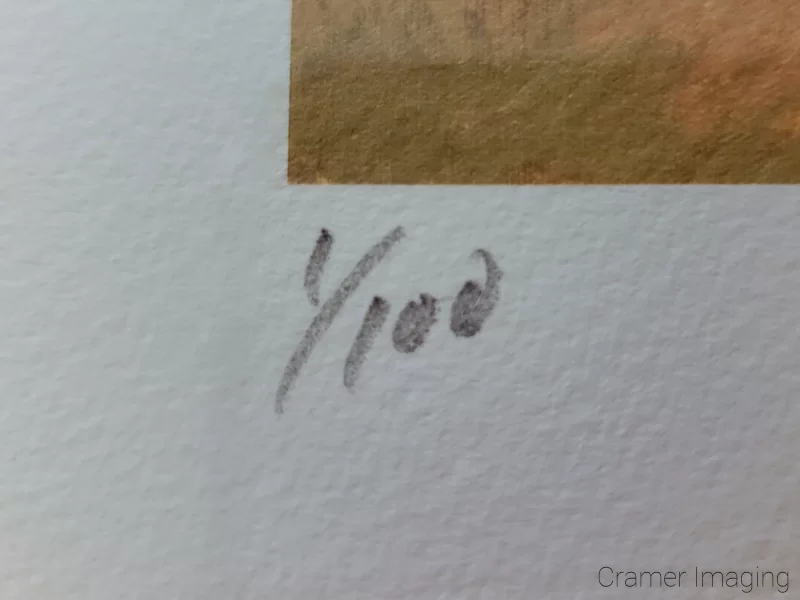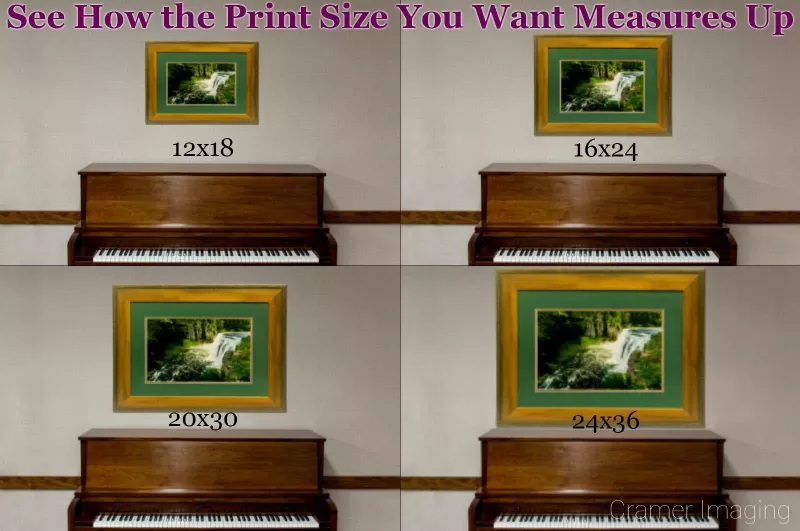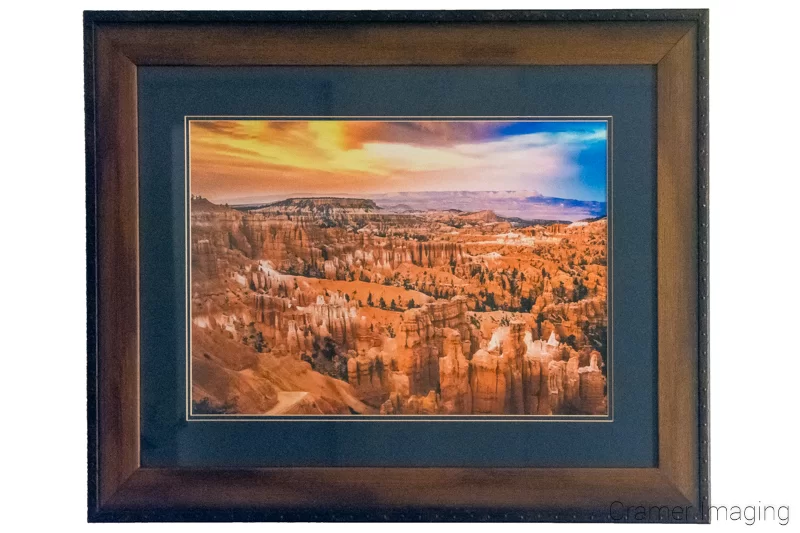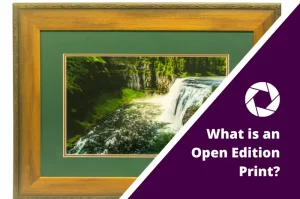Welcome to the fine art photography market. You’re obviously joining or rejoining the market if you decided to read this article. So, I say again, welcome. You probably want some help when it comes to locating and buying just the right fine art photography for you. That’s why you’re here and reading this. I do understand. I’ve been there before.
There are a few points which you must consider when purchasing fine art photography. Each point has merit but may not carry the same weight for you as it does for me. Still, they’re all worth considering as you ponder your purchase. So, let’s dive into it.
1. Don’t Rush the Process
The first point to consider is to not rush the process of buying fine art photography. There’s a ton of fine art photography out on the market today and more becoming available every day. While you don’t need to search for every single potential option, you don’t need to make a knee-jerk reaction either. You have time to think about what you see and whether or not it will work with your current home or office decor.

If something really sticks out in your mind, especially with time, then you might consider buying it. I once experienced that with a piece of jewelry. I first laid my eyes on it in June during an outdoor merchant fair. My budget did not allow for it, so I sadly passed on it then. What I did not anticipate was how that would take root in my mind. I found myself regretting my earlier actions. So, when I ran into it again in November for an indoor merchant fair, and budget allowed, I bought it for myself. If you experience something like that, then you should strongly consider purchasing the fine art photography in your mind.
2. Inspect Image Quality and Craftsmanship
Whether you are inspecting a print in person or an online rendering of a photo, you should inspect the image quality. Check and see if you’re looking at something high quality. Is the image in focus or deliberately blurred? How about pixelization? How do the fine details look? What about the overall image? How’s the color and contrast? If you can examine more of the photographer’s work (easier on a website), do you find a consistent style throughout?

Do keep in mind that higher resolution online images mean you can see the subject better, but they also require more time and resources to load. Don’t necessarily hold it against a photographer for favoring webpage loading speed over high resolution displays. Google loves webpages which load faster and doesn’t care about high resolution images.
3. Presentation and Condition
This point more applies to fine art photography sold in person where you can inspect the product for yourself. If you are looking to buy a fine art photography print in person, then it is incumbent upon you to inspect the merchandise for yourself. Take a thorough look at the presentation. It should be obvious. Is it matted? How about framed? Do the mat and/or framework well with the image inside? Will the combination work with the room you intend to display it in?


Take a hard look at the materials used. What kind of craftsmanship and quality do you see there? Is the photo paper archival? What does the frame look like? Could someone buy it at Walmart or was it a custom build? How about the mat? Is it single or double matted? Did the framer use acid-free mat board? Are you looking through museum-quality or conservation glass, or is it the cheap glass found in most low-end frames? Also, look and see if there is any visible or less visible damage. Check out the frame, the mat, the glass, the hanging options on the back. Look to see if the image inside appears faded, torn, or stained in some way. Make sure that everything is in good shape before you buy.
In the event you’re ordering your print from a website, check and see if the photographer offers pictures of what the final print (matted and framed) will look like. Some websites offer the opportunity to choose your mat color and frame choice with a live rendering. These are often the best alternatives the internet can offer to personally inspecting the merchandise. You might also look into mockup services if available.
4. Limited/Open Edition Status
Some fine art photographers will offer limited edition runs of a photo, perhaps in a particular size or perhaps in general. Others will not offer such. In that case, a print is called an open edition. Limited editions will always carry the mark of which number they are and how many prints were part of the run. Open editions will display no such marks.

With a limited-edition print, you know just how many the photographer made. He/she will not make any more (in that size or in general, depending). The photographer should also sign the print and offer a certificate of authenticity along with. However, those points are not required. In the old days, you solidified your limited edition run by destroying the negatives. Now, you can delete the digital file instead. Photographers often charge more for limited edition prints. They will charge even more for artist proofs as there are usually only 1-2 in a run. If a photographer makes a name for him/herself, then limited edition prints increase in value. The lower the number in the run, the more valuable the print becomes.
With open edition prints, you do not know just how many the photographer created. Even the photographer might not know. With some photographers, they create far fewer open edition prints than limited edition prints because demand is low. However, with others, the open edition prints far outnumber the limited-edition prints. It all depends upon the photographer and the photograph. Sometimes the photographer may sign these prints. Open edition prints will often become the more budget-friendly option as the photographer cannot charge the premium of a limited edition for an open edition print.
5. Print Size
Thanks to the nature of photography, you need not worry so much about print size. Most photographers offer multiple sizes ranging from small to giant. Even if they don’t normally offer a particular size, you may convince them to offer a larger size by ordering one. This argument might not sway a photographer to offer a smaller size, however.

If you’re buying your fine art photography in person, then you might find yourself limited to the sizes on-hand. However, ordering online will offer many more size options for you.
6. Photographer’s Reputation
This might seem like a lesser point on the surface; however, it is worth considering. Many times, print price is directly connected to the photographer’s reputation as an artist. The bigger the name, the higher the price tag. If you’re in doubt about a print’s price tag, you might check on the photographer’s reputation online. Check out Facebook, Yelp, Google Business, and more. Look for entries on auction-house sites. That might clear things up for you.

Another point to consider about the photographer’s reputation is the photographer’s business reputation. How does he/she conduct business? What kind of warranty does he/she offer and how is it honored? How does he/she handle criticism (especially trolls)? A simple internet search should answer most of your questions if the photographer has been in business long enough to garner a reputation. If not, then it’s up to you whether or not to make the purchase.
7. Price
Now, let’s address the elephant in the room for many people: price. Buying fine art photography isn’t often for the low-income consumer. However, there are options.

In fine art photography circles, you’ll find the price tag is connected to several factors such as print size, cost of printing, cost of obtaining the photo itself, time invested by the photographer, photographer’s reputation (as discussed above), limited/open edition status (as discussed above), and more. Framing and matting also play into the price.

If price is a major factor in in your adventure of buying fine art photography, then you might check into photographers who don’t command a huge presence in the market. Alternatively, you might look at purchasing a smaller size instead so you can still own a copy of the photo you love and not break the bank. If budget is not a concern, then you may buy to your heart’s content with no worries or constraints.
8. Personal Connection
I discussed this most important point in this article discussing the matter in depth. The summation is that you should seriously consider buying fine art photography which you connect with on some level. Your connection may arise from the story of how the photographer captured the photo. You may just like the subject matter. I once sold a photo to a woman who spent a great deal of time with her now deceased husband at the general location of where I took the photo. Whatever your connection to the photo, if you feel a one, then you should strongly consider buying the fine art photography in front of you.
Without a connection to the subject matter, the fine art photography print will not interest you nearly as much if at all. Therefore, you must feel some level of connection with the print to buy it.
Conclusion
Buying fine art photography is actually a relatively simple and easy process. You find something you like (and can afford); you inspect it to make sure it’s of the quality level you expect, then you buy it. It really is just that simple.
Since you’re obviously interested in shopping for some fine art photography, you might consider dropping by my online store. Feel free to use the criteria listed above to judge my work for yourself and whether or not it would work for you. I’m sure you’ll love what you see there.






